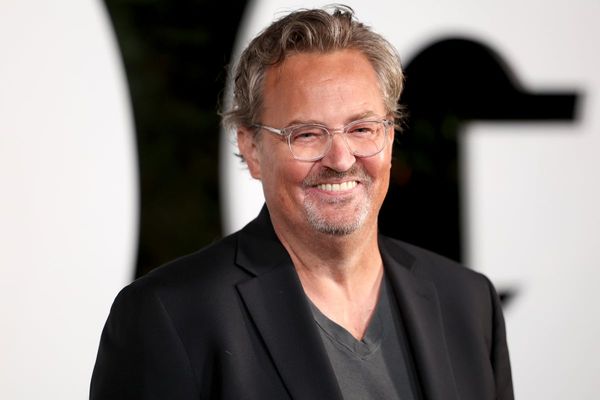
For seasoned tea-leaf readers of the future of TV in the UK, two stories will have stood out this week, swirling around at the bottom of their cups. There was the news that MTV is shutting down its music channels – sad for those of us who misspent their youth watching them, though hardly surprising either, given MTV’s decades-long shift away from music and towards rolling repeats of Teen Mom and shows about tattooists. And there was a media piece in the Guardian about the demise of British TV’s once-gold plated 9pm slot, which for the first time last month failed to achieve a rating of 1m or more among any of the major broadcasters.
That second story was a little surprising. Overnight viewing figures are in constant decline in the streaming age, but even by those standards, not one solitary rating over 1m is eye-catching.
It will naturally prompt the usual soul-searching about the end of appointment viewing: the whole country watching the same thing at the same time, families sat in the glow of the old cathode ray, kettle on in the ad break, et cetera. I’m not sure about that: appointment viewing, though not what it was, still lives on through live sport and certain blue-chip (often reality) shows (The Celebrity Traitors managed to attract some impressive ratings in that very same 9pm slot this week). But what the stories do underscore is something I’ve been thinking for a while: that TV channels, the places where we used to go to watch that appointment viewing, increasingly feel like an anachronism.
As a teenager I would make a beeline for Channel 4 on Friday night to watch whatever the new comedy was that was airing in its post-watershed slot, a show that existed in the lineage of a murderer’s row of classics, stretching right back to the debut of The Comic Strip Presents on the launch night of Channel 4. When viewers tuned in to watch a series such as Spaced, Peep Show or Garth Marenghi’s Darkplace, plenty of them would have done so not because of the talent involved – the cast and creators of those were pretty much unknowns outside comedy circles at that point – but because of that lineage. We trusted Channel 4 to deliver a good new comedy; its tastes and sensibilities broadly mapped on to our own.
All the channels used to have that sort of distinct identity, rooted in their history. Are your tastes broad and mass market? Stick on BBC One or ITV. After something a little more rarefied? Try BBC Two (or formerly BBC Four). Or something a little more youth-skewing? Head towards BBC Three, ITV2 and E4. Or are you into air friers, documentaries about shopping centres and talking heads remembering the 80s? Off to Channel 5 you go. And then there’s the constellation of other channels on digital and what we used to call satellite, each catering for a certain set of tastes and sensibilities.
Those sensibilities still exist today, of course – you can still trust Channel 4 to find great comic talent (I’m looking forward to seeing their upcoming comedy Make That Movie, starring gonzo Aussie comic Sam Campbell). But audience fealty to those channels doesn’t really exist in the same way. Nowadays, I’d argue that people are as likely to follow the talent around – someone like Jack Thorne, who bounces between BBC (Best Interests, the forthcoming Lord of the Flies series), ITV (The Hack) and Netflix (Adolescence, Toxic Town) – or devote attention to the production company involved in a show (see the A24 logo, now appearing on the title cards of Some Brave Girls and Dreaming Whilst Black).
Simultaneously, the broadcasters have sought to downplay the very idea of these channels on their streaming platforms, the place where most people now watch their shows. On its homepage, iPlayer, for example, no longer tells you whether a show such as Film Club is BBC One, Two or Three (it’s Three, for the record). Instead, everything sloshes together in one big punchbowl of programming, the arts docs swimming alongside the soaps, the true-crime series next to the panel shows. Which makes sense, really: after all, in the age of streaming the aim is to keep people on your platform for as long as possible, so you need to illustrate the boundlessness of your content, low and high. But it does give a slight feeling of formlessness, of every streaming platform feeling a bit similar to one another. (Disney+ is a bit of an outlier here, splitting the platform into individual channels, including a section for National Geographic and – confusingly for UK viewers – a recently rebranded tab dedicated to US streamer Hulu, for more mature content.)
All of those broadcasters are of course chasing Netflix, a platform that wants to replace TV wholesale, and thus has little interest in the idea of individual “channels”. Does Netflix have a sensibility? Perhaps, just about – though as it grows ever bigger that feels less evident. It wants to be an everything shop. That’s because Netflix is chasing YouTube – it’s why they just signed a deal with Spotify to broadcast video versions of some of their podcasts, video podcasts being a huge market that YouTube has so far pretty much had to itself. YouTube – with its billions of videos, ranging from shonky home movies right up to the highest of high-production series – is the ultimate example of this formless punchbowl of content, algorithmically guided but entirely absent of a sensibility.
Should we lament the demise of channels, especially if great programming is still getting made? I think we should. At their best they play the same role as the best film studios and record labels, places that talented people gravitate towards, and audiences implicitly trust. Let’s hope they stick around for a while yet, so that you can press a button on your remote and stumble upon the next Peep Show.
If you want to read the complete version of this newsletter please subscribe to receive The Guide in your inbox every Friday







